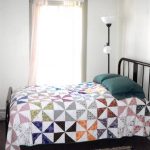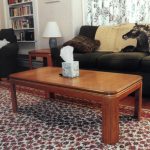Part 1 of 2: Conversation with Executive Director Heather Campbell & Residential Services Coordinator Amy Smith
Since the founding of our agency in 1977, one of our core services has been to offer shelter services to adult victims of domestic violence and their children. Over the years, our shelter services have changed location and capacity, from a network of volunteer homes to a rented apartment to a leased house to our current Safe House. No matter the location, our shelter services have offered a safe, confidential place where victims of domestic violence and their children can go when they have no other safe place to stay.
“Nobody thinks they are going to end up in a domestic violence shelter and nobody wants to be there,” Executive Director Heather Campbell said. “They may be grateful to be there, but it’s not where anyone wants their life to be. Knowing all of those things, our staff focuses on how we can make our shelter residence as safe and healing as we can, while recognizing all of the challenges that our residents are facing.”
Grabbing your life in 15 minutes
Leaving an abusive partner is an incredibly difficult and stressful experience, filled with uncertainty and upheaval. Residents generally arrive at our Safe House with just what they can carry. “It’s not uncommon for individuals to have fifteen minutes or less to fill a couple suitcases or garbage bags with personal items,” Residential Services Coordinator Amy Smith described. Heather Campbell recalls accompanying victims, along with police officers, as they grabbed as many of their belongings as possible before fleeing their home. “It can be paralyzing to imagine what it would be like to grab your life in fifteen minutes and to consider everything you’d need to build a life again,” Campbell added.
Our agency has made efforts to expand our capacity to store personal items for our residents. We renovated the garage of our Safe House to add more storage space. We also partner closely with the ReUse Center and Catholic Charities to help our clients secure the items they need to build a new life after they leave our Safe House.
A comfortable home
When people imagine a Safe House, they may think of a very institutionalized setting. When residents of our Safe House first arrive, there is often a moment of relief when they come in and see that it looks and feels like a comfortable, typical home. We often hear new residents say, “This is nicer than I thought.” We try our very best to make it as welcoming and home-like as possible. It’s a very typical-looking house with multiple bedrooms, a playroom, and an outdoor play patio. We try to make the shelter a safe, healthy, and fun place for the children who stay with us while trying to foster familiar routines for our adult residents. Residents can make their own food, do their own laundry, and, most often, have their own rooms.



Building safer futures
Even with all of our efforts to make the home as comfortable as possible, we acknowledge that living in our Safe House can be hard. Co-living with people who are all going through what may be the most stressful time of their lives is a struggle for the adults and children alike. As our residents begin the healing process, they go through emotional stages of thinking about how they ended up there and how they will build safer lives for themselves and their children.
At times, our residents are involved in active criminal or family court cases. Our staff provide intensive case management and support for residents as they navigate these complex systems, including help with Family Court, orders of protection, and custody and visitation issues. We also work hard to connect our residents with all of the housing, social services, and medical resources in our community that are available to them.
Despite all of the challenges that our Safe House residents face, it is always our goal to support them as they navigate their transition to a safer life for themselves and their children.
Check back for more information about our Safe House in January 2019.
OTHER ARTICLES IN THIS ISSUE:
- Holding Hope For Survivors
- Volunteer Spotlight: Kassy Crawford
- ACTion Update (Advocacy Center Teens)